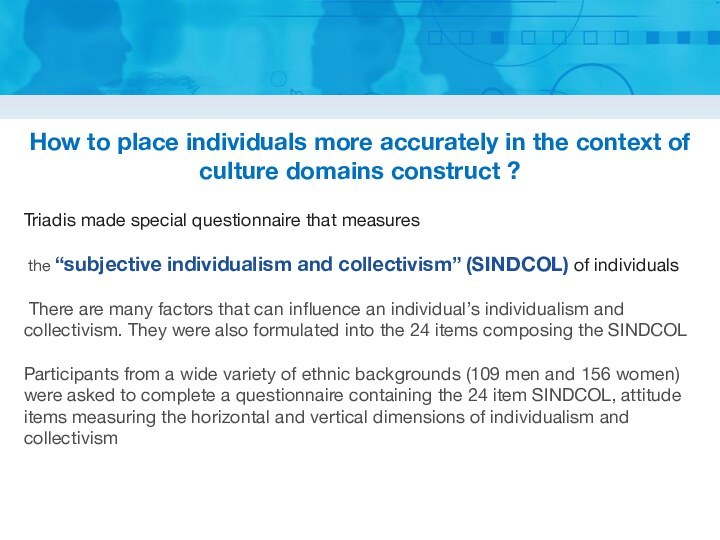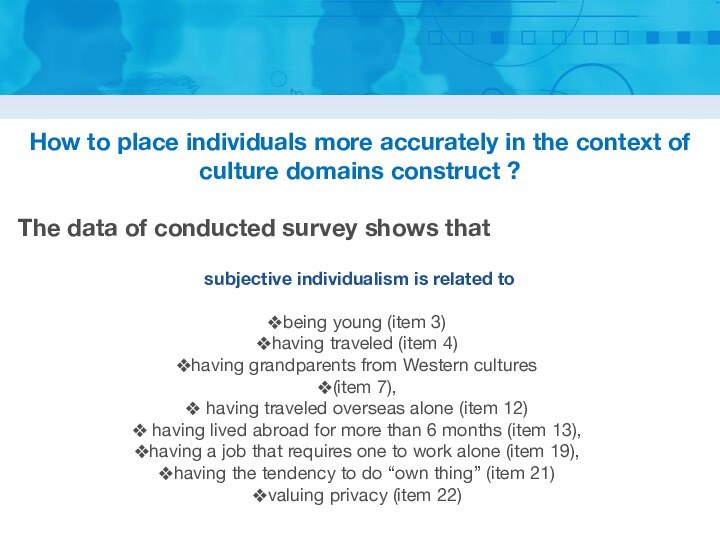that four attributes define collectivism and individualism:
The meaning of
the self Collectivists use groups as the units of analysis;
individualists use individuals for that purpose.
The definition of the self in collectivist cultures is
interdependent with members of groups;
in individualist cultures it is
independent of groups
The structure of goals
Collectivists use individual goals
that are compatible with the goals of their
ingroups. Individualists use individual goals
that may or may not be compatible with the goals
of their ingroups. If there is a discrepancy between
the two sets of goals, individualists give priority
to their personal goals
4











































